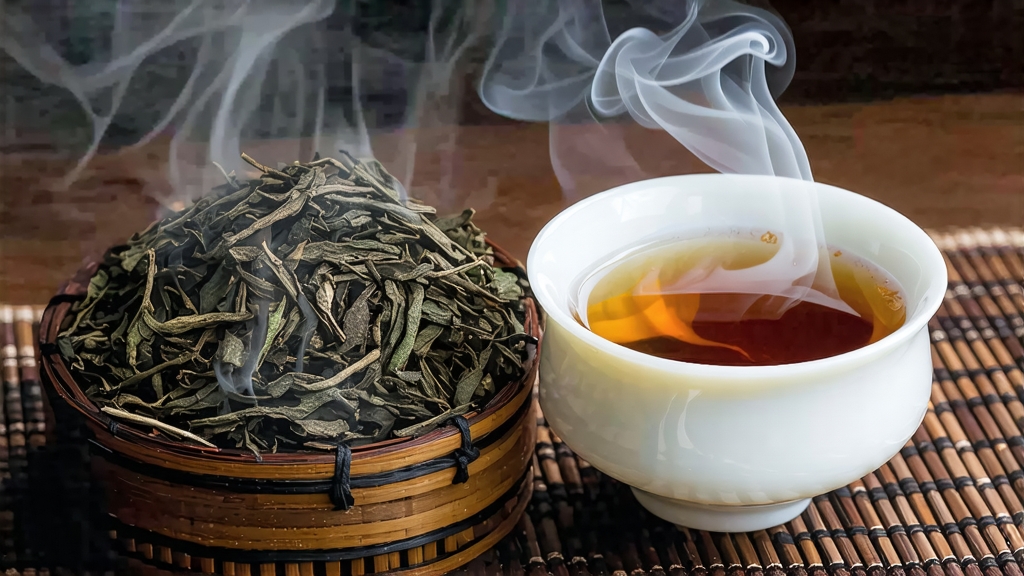
Long before English breakfast blends and afternoon tea trays, the first black tea ever created was born in the rugged Wuyi Shan of northern Fujian. Locals call it Zheng Shan Xiao Zhong—“small leaf from the original mountain”—but the outside world knows it as Lapsang Souchong. Its birth story is wrapped in legend: a passing army requisitioned a tea factory during the late Ming dynasty, forcing farmers to hastily dry their half-oxidized leaves over fresh pinewood fires so they could flee before the soldiers returned. The accidental smoke infusion proved irresistible to Dutch traders who carried the novel “bohea” to Europe in 1604, launching a four-century love affair that would reshape global palates and trade routes.
True Lapsang Souchong is still produced only inside the 600–1 200 m core zone of Tongmu Guan, a protected enclave where subtropical mists rise from the Jiuqu Xi River and settle into a perpetual humidity that slows leaf growth and concentrates amino acids. The indigenous cultivar is a petite, slightly twisted variety of Camellia sinensis var. sinensis known locally as cai cha; its leaves are no larger than a fingernail, yet they carry surprising heft once oxidized. Within the same micro-region two styles coexist today: the traditional smoke-dried and the increasingly popular unsmoked “wild” version that showcases natural honey, longan and mineral notes. Purists argue that only the former deserves the name Lapsang Souchong, while the latter is simply Tongmu Xiaozhong, yet both share the same meticulous craft cycle.
Plucking begins at Qingming when the mountain air still carries winter bite. Two leaves and a bud are nipped before noon so that the dew can evaporate without bruising the fragile tips. The leaves are then laid in shallow bamboo trays and withered for 8–10 hours over carefully controlled pinewood embers; the temperature must hover between 28–30 °C so that moisture exits slowly while the smoke’s resinous volatiles—guaiacol, syringol, creosol—begin their courtship with the leaf’s native catechins. Once the lamina feels leathery, workers roll it by hand on rattan mats, breaking cell walls just enough to release oxidative enzymes. Oxidation itself happens in cedar-lined chambers where 80 % relative humidity and 24 °C coax the leaf from olive to copper within three hours; here the tea acquires its signature cocoa and dried-fruit base before smoke re-enters the narrative.
The final act is the firing and smoking tunnel, a brick corridor unique to Tongmu. Fresh pinewood slabs are stacked at the tunnel mouth; when they smolder, convection draws the cool, aromatic smoke across tiers of tea resting on bamboo screens. Masters gauge readiness not by clock but by ear: when the crackle of resin softens to a whisper and the leaf’s moisture drops to 4 %, the tea is carried out and allowed to “dream” for one moon cycle so that smoke and leaf marry into a seamless bouquet. The result is a strip that is glossy, jet-black with hints of mahogany, releasing an aroma that oscillates between campfire, dried longan and the incense of an old temple after rain.
To brew Lapsang Souchong gongfu style, start with soft, neutral water brought to 95 °C. Pre-warm a thin-walled porcelain gaiwan so that heat loss is minimal; use 4 g of leaf for 100 ml, enough to blanket the bottom in a loose single layer. The first 5-second rinse is discarded—it is a polite bow to the mountain spirits and a quick check that the smoke is clean, not acrid. Subsequent infusions begin at 8 seconds, adding 3 seconds each round. Watch the liquor: the opening steep glows a translucent sienna ringed by a faint gold halo, a color the Dutch once described as “the shade of monks’ robes at sunset.” Lift the cup to your nose; the smoke arrives first, but give it a heartbeat and you will detect malt, burnt sugar and the cooling note of camphor that lingers in high-altitude forests.
On the palate the tea behaves like a well-orchestrated symphony: top notes of pine and lapsang resin announce the theme, mid-palate introduces cocoa and roasted